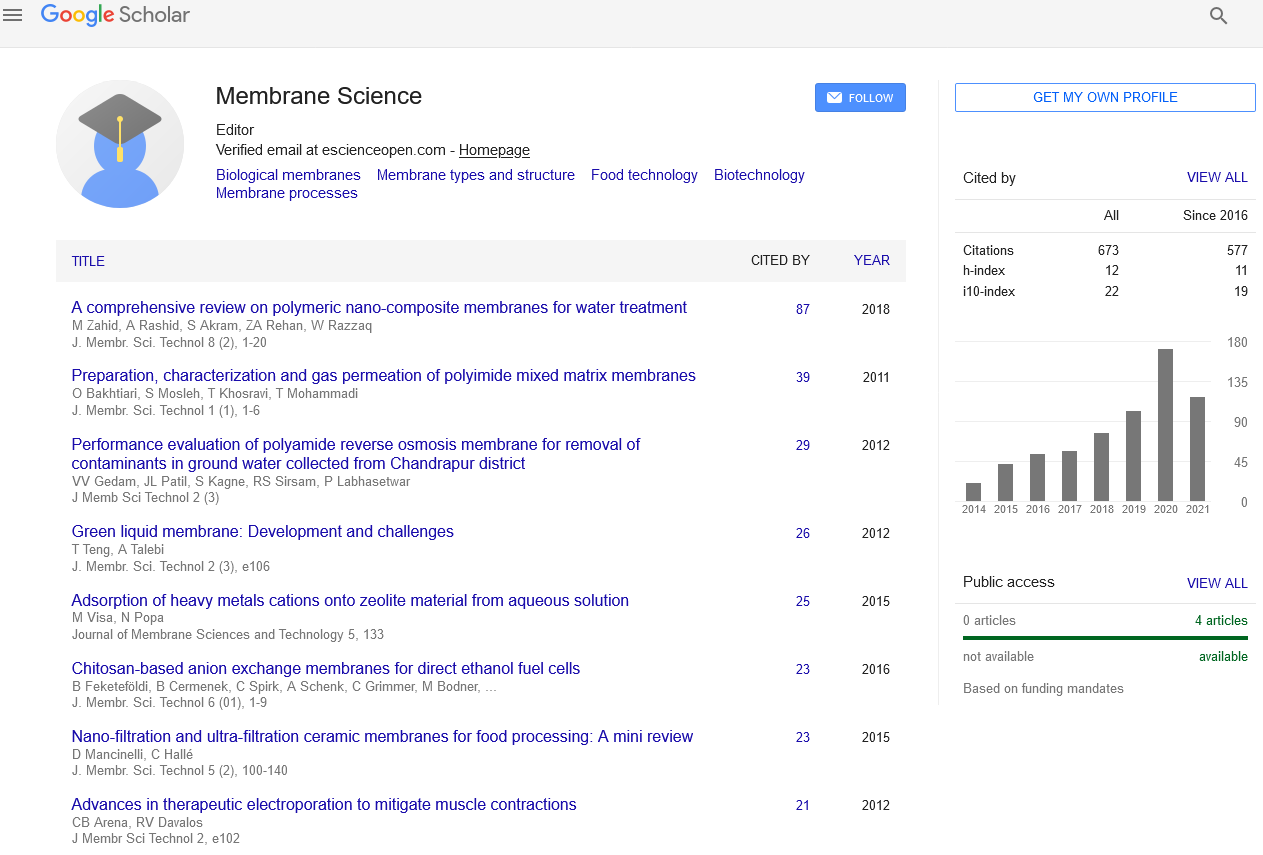Indexed In
- Open J Gate
- Genamics JournalSeek
- Ulrich's Periodicals Directory
- RefSeek
- Directory of Research Journal Indexing (DRJI)
- Hamdard University
- EBSCO A-Z
- OCLC- WorldCat
- Proquest Summons
- Scholarsteer
- Publons
- Geneva Foundation for Medical Education and Research
- Euro Pub
- Google Scholar
Useful Links
Share This Page
Journal Flyer

Open Access Journals
- Agri and Aquaculture
- Biochemistry
- Bioinformatics & Systems Biology
- Business & Management
- Chemistry
- Clinical Sciences
- Engineering
- Food & Nutrition
- General Science
- Genetics & Molecular Biology
- Immunology & Microbiology
- Medical Sciences
- Neuroscience & Psychology
- Nursing & Health Care
- Pharmaceutical Sciences
Abstract
Positively Charged Polyethersulfone Membranes: The Influence of Furosemide on the Zeta Potential
Joanna Gasch, Claudia S Leopold and Holger Knoth
The aim of the present work is to measure changes in the Zeta potential of uncharged (PES0) and positively charged (PES+) polyethersulfone membranes, and to investigate their chemical composition. Endotoxin-retentive filters with a 0.2 ?m PES0 and PES+ membranes are used for filtration of a furosemide sodium solution, with an increasing concentration up to 60 ?mol/l. To analyze the chemical composition of both membranes, X-Ray photoelectron spectroscopy (XPS) was used. The Zeta potential was determined by a streaming current electrokinetic analyzer. The positive charge of the PES+ membrane corresponding to a positive Zeta potential decreased with increasing furosemide sodium concentration. In contrast, the Zeta potential of PES0 membranes hardly changes with increasing drug concentration. XPS allows the determination of the chemical composition of the investigated membranes. Both membranes only contain oxygen, carbon, sulfur and nitrogen. On the surface of the PES+ membrane, the positive charge is caused by ammonium nitrogen. No ionic additives could be detected. The manufacturer?s intended period of PES+ filter use (96 h), should only be applied to nonionic infusion solutions. Hence, information should be given on the maximum period of filter use, if ionic infusion solutions are applied.


